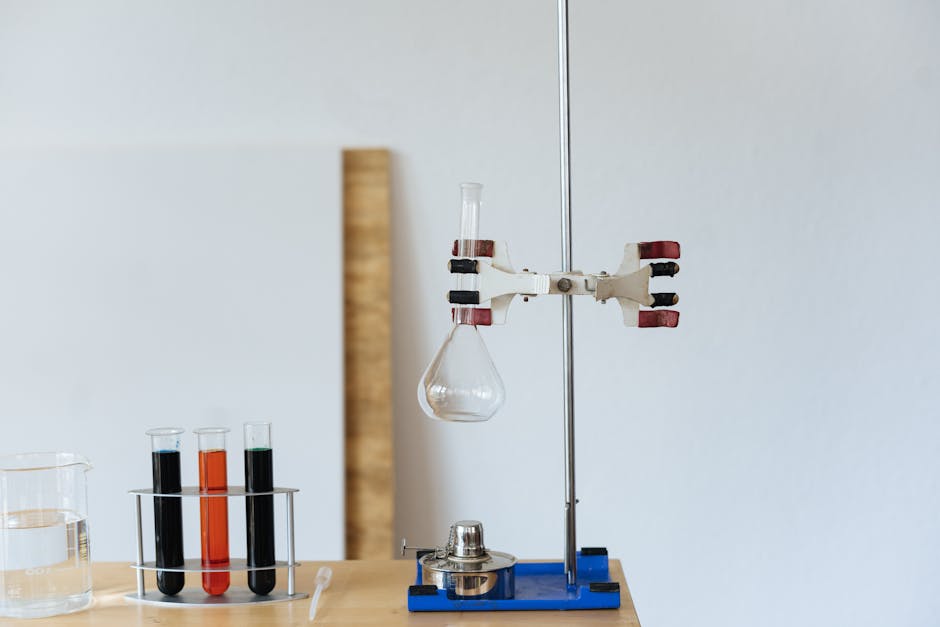Useability Testing: Improving User Experience
You’re likely losing customers and revenue due to poor user experience, and the culprit might be as simple as a misplaced button or unclear instructions. That’s why thorough useability testing is essential to creating a product that truly resonates with your target audience. By understanding your users, you can identify pain points and areas for improvement. With the right testing method, you can gather valuable feedback and pinpoint issues. From there, it’s all about analysing results, prioritising findings, and implementing changes. As you dig deeper, you’ll uncover the secrets to designing an intuitive, user-friendly experience that keeps customers coming back for more.
Key Takeaways
• Conducting useability testing helps identify areas where users struggle, providing valuable insights to improve user experience.• Understanding the target audience through demographic analysis and user personas is crucial to creating a product that resonates with users.• Choosing the right useability testing method, such as in-person, remote, or expert reviews, depends on goals, resources, and timelines.• Analysing user behaviour and feedback, including task completion rates and error rates, reveals critical issues that need to be addressed.• Prioritising findings based on impact on user experience ensures effective roadmap creation and resource allocation for improvement.
Understanding Your Target Audience

When designing a product, you’re not creating for yourself, but for a specific group of people, so you must understand your target audience inside and out.
It’s easy to get caught up in your own biases and assumptions, but that’s a recipe for disaster. To create a product that truly resonates with users, you need to know who they are, what they want, and what makes them tick.
That’s where demographic analysis comes in. This involves gathering data on your target audience’s age, gender, location, occupation, and other factors that define them.
But demographics only tell half the story. To get a deeper understanding of your users, you need to create user personas. These are fictional characters that represent your ideal user, complete with their own goals, motivations, and pain points.
Types of Useability Testing Methods

You’ve got your target audience nailed down, now it’s time to put your product in front of them and see how it fares – that’s where useability testing comes in, and it’s not a one-size-fits-all affair.
There are various types of useability testing methods, each with its own strengths and weaknesses.
One popular method is in-person useability testing, where you observe participants interacting with your product in a controlled environment. This method provides rich, qualitative feedback, but it can be time-consuming and expensive.
On the other hand, remote useability testing allows you to reach a wider audience and save on costs. With remote moderation, you can facilitate testing from anywhere, making it an attractive option for teams with limited resources. You can use online tools to observe participants’ behaviour, gather feedback, and identify areas for improvement.
Expert reviews are another valuable method, where a useability expert evaluates your product against a set of established guidelines and best practises. This method provides a thorough assessment of your product’s useability, highlighting potential issues and opportunities for improvement.
Ultimately, the choice of useability testing method depends on your goals, resources, and timelines. By selecting the right method, you’ll be able to gather valuable insights, iterate on your product, and create a seamless user experience.
Preparing for a Useability Test

Before diving into a useability test, your product’s fate is sealed – its success or failure hinges on the prep work you put in, so get ready to roll up your sleeves and tackle the essential task of preparing for a useability test. You’re about to invest time and resources, and you want to ensure you’re getting the most out of it.
To set yourself up for success, focus on these crucial prep tasks:
Define your test objectives: Identify what you want to achieve with your useability test. What questions do you want to answer? What problems do you want to solve?
Recruit the right users: Find participants who match your target audience. You want to test with real users who’ll give you authentic feedback.
Write a solid test script: Create a clear, concise script that guides the test and ensures you’re asking the right questions.
Prepare your prototype or product: Make sure your product is in a useable state, and any necessary equipment is in working order.
Conducting a Useability Session

As you step into the role of a useability tester, you’re about to uncover the hidden obstacles in your product’s user experience.
You’ll start by preparing the test environment, making sure everything is in place for a smooth session.
Next, you’ll conduct the useability test, observing participants as they interact with your product, and finally, you’ll identify the pain points that need attention.
Preparing the Test Environment
When conducting a useability session, set the stage for success by transforming a typical conference room into a comfortable and distraction-free testing environment that fosters open conversation and honest feedback. You want your participants to feel at ease, so they can provide you with authentic insights.
To achieve this, focus on the Environment Setup.
Prepare a clear and concise script that outlines the tasks and questions you’ll ask participants to ensure consistency across all sessions.
Remove any distractions, such as turning off notifications on computers or finding a quiet room, to keep participants focussed on the task at hand.
Ensure participants are physically comfortable, with adjustable chairs and adequate table space, to reduce fatigue and encourage engagement.
Set up cameras and microphones to capture participants’ reactions, comments, and body language, allowing you to analyse their behaviour later.
Conducting the Useability Test
You’re about to undertake the most critical part of the useability testing process: observing and interacting with your participants as they navigate your product or service. This is where the magic happens, and you get to see your users in action.
As the moderator, your role is to facilitate the session, making participants feel comfortable and at ease. Before the session begins, make sure you have a solid Test Script in place, outlining the tasks and scenarios you want participants to complete.
This will help you stay on track and obtain the insights you need. As the moderator, maintaining a neutral tone and avoiding leading the participant towards a specific outcome is crucial.
During the session, pay attention to participants’ body language, facial expressions, and verbal feedback. Ask open-ended questions to encourage them to think aloud and share their thoughts.
Identifying Pain Points
By observing participants’ struggles and frustrations during the useability session, you’ll uncover the pain points that need attention, and that’s where the real magic happens.
As you watch users interact with your product, you’ll identify the pain sources that hinder their experience. These pain points can be subtle, but their impact is significant.
To identify pain points effectively, look out for the following signs of user frustration:
Verbal cues: Pay attention to what users say when they’re struggling, such as ‘I don’t get this’ or ‘This is stupid.’
Body language: Notice when users display frustration through their body language, like furrowed brows or tapping feet.
Error rates: Take note of how often users make mistakes or encounter errors while completing tasks.
Time taken: Identify tasks that take users an inordinate amount of time to complete, indicating confusion or difficulty.
Analysing and Interpreting Results

Now that you’ve gathered all the data, it’s time to sift through it and uncover the gems.
You’ll start to identify patterns that emerged during the useability sessions, and that’s when the magic happens – you’ll uncover hidden insights that can make or break your product’s user experience.
As you analyse the results, you’ll be amazed at how these patterns and insights will start to tell a story that’ll inform your design decisions.
Identifying Patterns Emerged
As you dig into the wealth of data collected during useability testing, patterns will emerge, revealing the most critical issues that need to be addressed. You’ll start to notice trends and correlations that weren’t immediately apparent during the testing process. This is where data clustering and pattern recognition come into play.
By applying these techniques, you’ll be able to identify key areas for improvement and prioritise your design iterations.
Task completion rates: Are users consistently struggling to complete a specific task or set of tasks?
Error rates: Are there particular error messages or error-prone areas of the interface that need attention?
Time-on-task metrics: Are users spending an inordinate amount of time on a particular task or section of the interface?
User feedback and sentiment: Are there common themes or complaints emerging from user feedback and sentiment analysis?
Uncovering Hidden Insights
As you delve into the results, remember that the goal is to uncover insights that’ll improve your user experience.
Start by identifying patterns and themes in your data. Look for behavioural cues, such as body language, facial expressions, and verbal feedback. These nonverbal signals can reveal underlying emotions and pain points that users may not explicitly express.
Next, examine emotional triggers that influenced user behaviour. Did frustration or excitement emerge during certain tasks? Analyse these emotional responses to understand what drove them. Were there any ‘aha’ moments or moments of confusion? By examining these emotional triggers, you’ll gain a deeper understanding of your users’ thought processes and behaviours.
As you analyse and interpret your results, prioritise findings that have the greatest impact on user experience. Identify areas that require immediate attention and those that can be addressed in future iterations. By doing so, you’ll create a roadmap for improvement, ensuring that your product or service meets the needs and expectations of your users.
Implementing Changes and Iterating

By incorporating user feedback and iterating on your design, you’ll refine your product into a seamless, user-friendly experience that meets the needs of your target audience. This is where the magic happens – where you take the insights gathered from useability testing and turn them into actionable design refinements.
To get started, prioritise the most critical issues and allocate resources accordingly.
Fix the low-hanging fruit: Address the most glaring issues that hinder user experience, such as confusing navigation or unclear messaging.
Rethink your design assumptions: Challenge your initial design decisions and explore alternative solutions that better aline with user needs.
Streamline and simplify: Eliminate unnecessary features and simplify complex processes to reduce user frustration.
Test and retest: Continuously iterate and test your design refinements to confirm they meet user expectations.
Conclusion
You’ve made it to the end of the useability testing journey!
Now, go forth and create user-friendly experiences that delight.
Remember, every dollar invested in useability returns $10 to $100 in cost savings and improved productivity (according to IBM).
That’s a staggering ROI, if I do say so myself.
By prioritising useability testing, you’ll not only save time and resources but also make users swoon with joy.
Contact us to discuss our services now!
